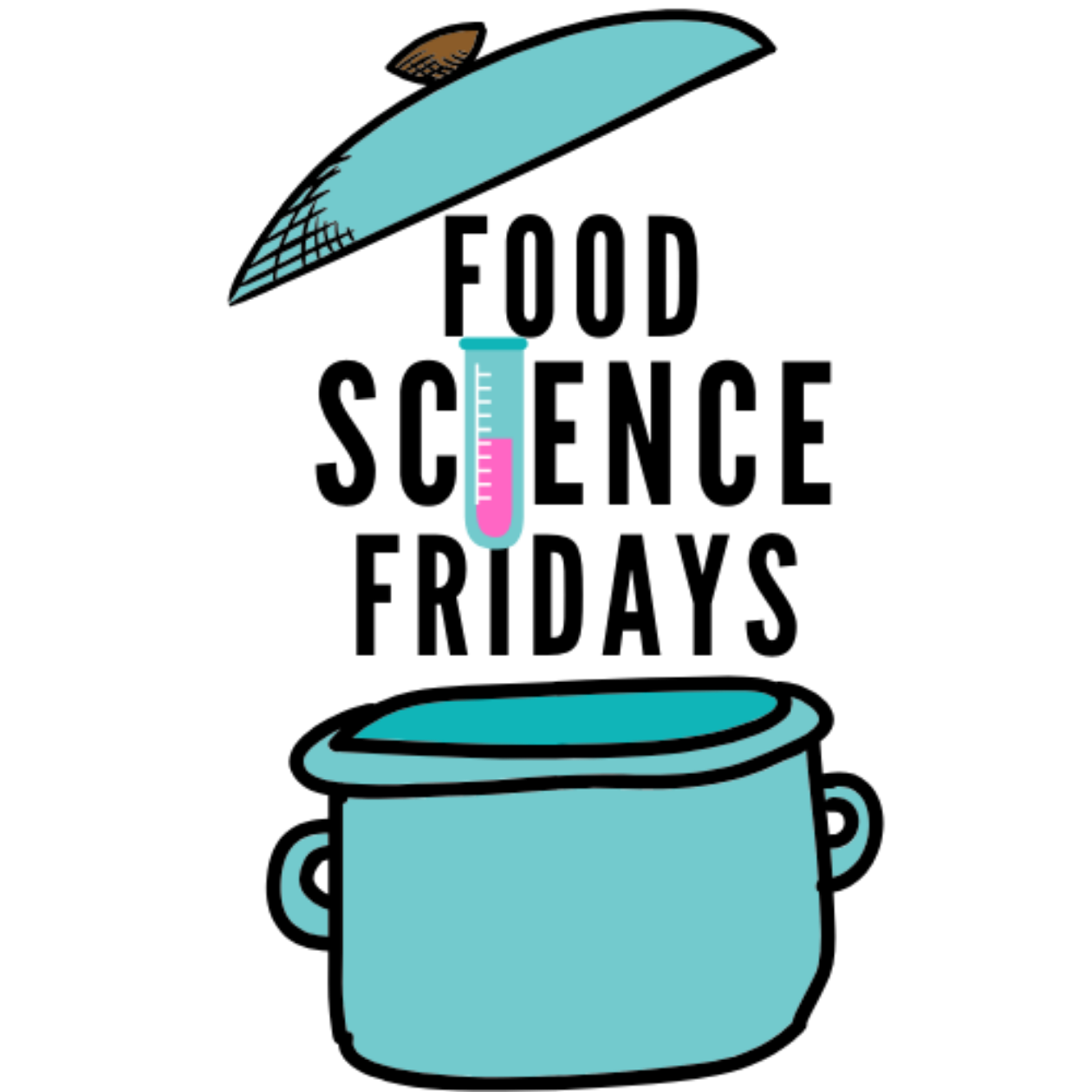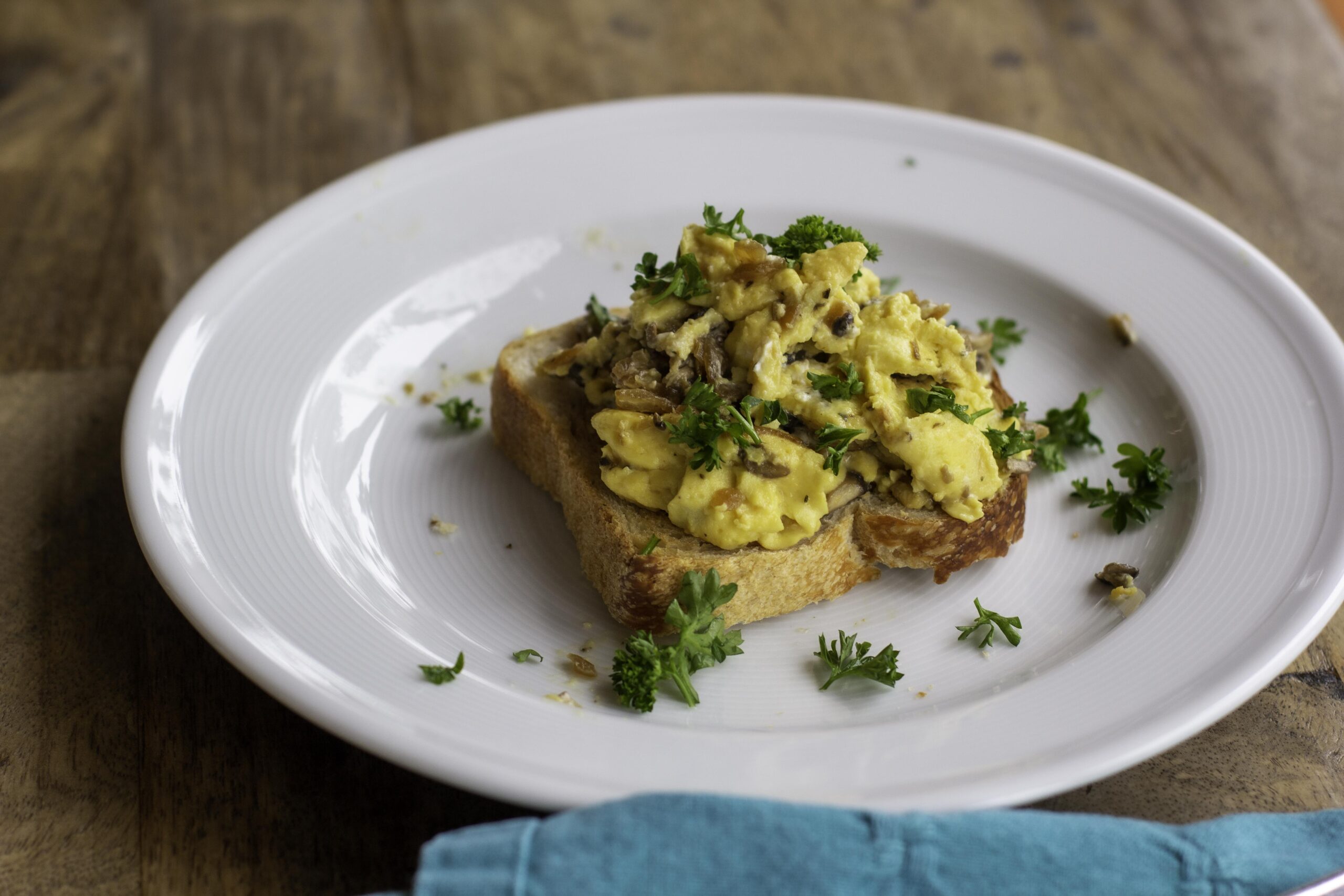Eggs are one of the most versatile ingredients from the sweetest merengues to the creamiest custards, and of course a nice savory and nutritious breakfast!
Let’s explore what makes the egg so incredible and useful in the kitchen by going back to basic kitchen chemistry and making some nice fluffy scrambled eggs.
Egg Structure
As we open up the egg, we tear apart the protective shell membranes and air cell to get to the yolk and albumen (or egg white). The white contains about 60% of the total protein in an egg and the yolk has the other 40!
More than half of the protein in eggs is ovalbumin, which gives the egg its unique properties. and happens to denature easily upon application of heat.
When you apply heat, you are basically sending a jolt of energy (that’s what heat is). This agitates the egg proteins causing them to bounce around and collide with other proteins. The proteins made up of long amino acid chains begin to loosen from their folded structures (denature), and these loose protein strings become tangled in a kind of 3-D web, turning the egg into a semi-solid state. As more heat is applied, bonds break and reform, leaving less space for the water, and eventually most of the water evaporates out. The egg proteins coagulate and creates what we think of as scrambled eggs.
But here’s the catch, egg white and egg yolks coagulate at different temperatures. Egg whites start to coagulate at approximately 140 deg F (60 deg C), but or yolks slightly warmer temps of 144-158 deg F are needed for coagulation. Interestingly enough, when you beat eggs they coagulate at about 156 deg F or 69 deg C.
So, now that we’ve got the basic science down, how do we make perfect scrambled eggs?
How to make the perfect scrambled eggs:
1. Add a liquid
Add approximately 1 tbs or less milk, water, or cream per egg and beat with a whisk. Adding milk, water, or cream dilutes the proteins, which in turn raises the coagulation temperature to approximately 175 deg F (79 deg C). Although the eggs will take longer to cook, they will be fluffier, because the added liquid will create steam during cooking, lifting the egg and creating a soft fluffy texture. Here I’m adding whole milk as I enjoy the texture and taste best when I add milk.
But caution, if you add too much liquid. It will make the eggs watery and form small tough rubbery curds- not what we want!
2. Cook on medium-low heat
Add a dash of oil or butter to keep eggs from sticking and heat pan on medium to low heat.
Cooking on high, means running the risk of overcooking your eggs. When heat is applied for too long, the protein web tightens and retains so little water, that the white takes on a rubbery texture and the yolk becomes chalky. Are chalky and rubbery what you want in a scrambled egg? No. Cook on medium to low, and remember, patience is required to reach perfection.
3. Stirring is a matter of personal preference
Too much stirring will break the egg into many small pieces. For some dishes this may be desirable. In fact, the French style scrambled eggs are cooked over very low heat and whisked constantly to create a custard-like pourable texture with very small curds, but the drawback is that you lose some of the fluffiness this way, as constant whisking disturbs the protein network allowing the trapped gas and water vapor to escape.
Instead, try gently lifting the egg repeatedly with a spatula so the undercooked portion slides beneath.
4. Remove from heat early.
Make sure to remove from heat a little before the eggs reach the desired texture as the eggs will continue to cook a bit in the hot pan. It’s better to take them off a bit early as you can always put them back on the burner if they are still undercooked.
And there you have it!
Resources
López-Alt, J. K. (2015). The Food Lab: Better Home Cooking Through Science. United Kingdom: W.W. Norton, Incorporated.
Brown, A. (2014). Understanding Food: Principles and Preparation. United States: Cengage Learning.

